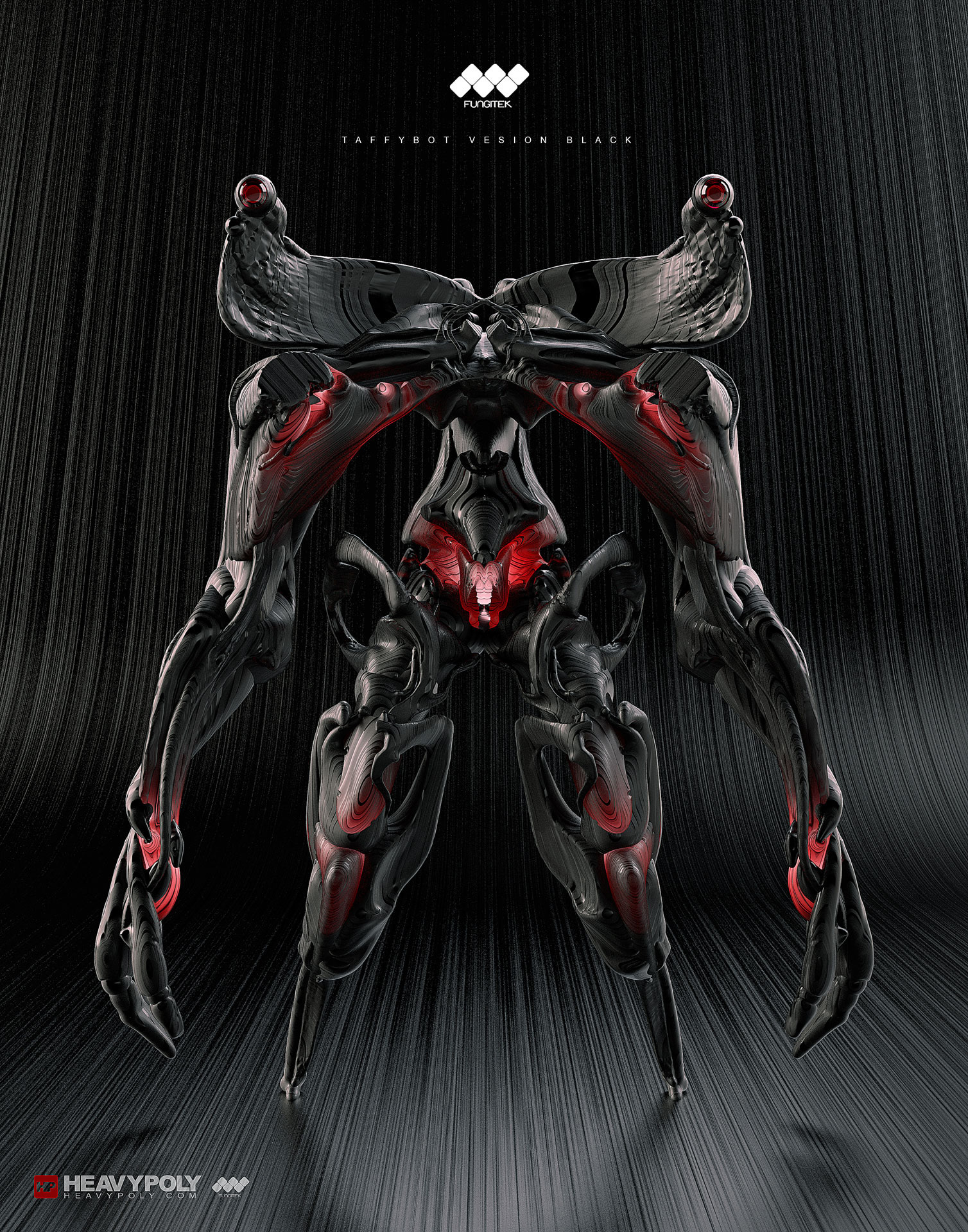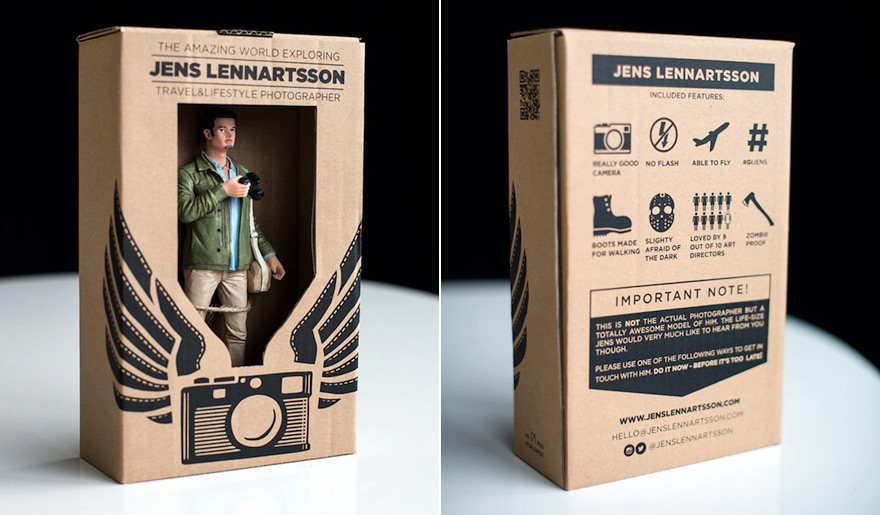Benjamin Nicholas works as a 3D Environment Artist at 343 Industries
Ben, it is awesome to talk to you again. Watching your career grow over the last few years has been really inspiring. That said, let’s go back to the start. How the heck did you first get into 3D modeling?
I was a freshman in high school when I was first introduced to 3d. I had a very close friend who had been doing it as a hobby for a while, and he handed me a copy of Bryce 5 and Discreet 3ds Max 5. I remember being 13 and opening Max. My immediate reaction was “I will never be able to understand this”, so I closed and uninstalled it immediately. Afterwards, I opened up Bryce and had an easier time. Keep in mind that it was all just boolean modeling, and that will give you a general idea of the kind of art I was making. All that said, I started making shorts in Bryce; and it would take weekends to render if not longer.
About a year later, I had the resolve to learn Max; so I reinstalled it. I learned by modeling Star Wars ships; and that, in turn, helped me get more comfortable with it. After tutorial upon tutorial, I worked on my own personal projects and started doing shorts in Max. By the end of high school, my parents recognized my passion and got me a copy of Maya which I picked up rather quickly.
I think that is a common first reaction that beginners have when starting out with 3D. Just the other day I had a fan of PolyPlane tell me that he “was hesitant to learn initially and then went through the Surfacing video series — Ultimately it made sense once I went through the tutorials.” Showing the importance of diving in head first.
Do you have a favorite time of day to model?
It used to be late at night. This was mostly due to my own insecurities and self consciousness as an artist. To be frank, there’s a moment when you’ve been up so late and you’re so exhausted that you don’t have the emotional capacity to deal with yourself. This allowed me to just focus on art as opposed to constantly second guessing myself. Those insecurities hold you back and keep you from doing what you know. They prevent you from owning your perspective as an artist. So, by exhausting myself, I was able to do what I needed to. Nowadays, I can’t afford to deprive myself of sleep all of the time; so I have a bit of a routine that allows me to make art when needed.
What a great lesson! You sort of hacked your brain to be better. I’m going to implement this idea immediately.
What was it like going from an industry where there is a tangible product (Adidas) to going to one where the output mainly lives within the computer environment.
This was a bit of a professional odyssey. I was used to working in a digital medium before I started my Adidas gig, so the idea of prototyping and 3d printing my work was completely novel. The first time I held a print of a footwear design in my hand was unbelievable. That all sounds melodramatic, but it’s true. There’s something incredibly special about holding something you’ve made. That’s unremarkable to traditional artists I suppose, but it was life changing for me.
That’s a great point, I cover the excitement of holding a prototype in your hand in the Output video series. People love it!
Something you must understand is that I scoffed at design for the longest time. In school, I viewed myself as an artist and saw designers as a group who constantly, unnecessarily stressed themselves out over how many millimeters wide a line was. I thought it was ridiculous. So the first time I held a print, I began to understand why a designer would agonize over such details. When you hold a prototype, you realize its real…tangible. And when it comes to footwear or apparel, the millimeters in those lines mean something. A consumer will recognize when it’s not right….even if they can’t articulate it.
All that said, that change in mentality didn’t come quickly. I remember a few months in to my time at Adidas; I was sent to the main headquarters in Germany to teach designers how to utilize 3d and to help establish our new 3d pipeline. After a day or two, I sat in my hotel room in the small village of Herzogenaurach and was really questioning my career decisions. I knew I wanted to get into games, but I’d taken the offer to be a 3d designer at Adidas. I was sick of the constant agonizing over small design elements, so I decided to work on a personal project that was that antithesis of everything I’d learned at work. This project became my Con Am 27 Shuttle from the film Outland.
I wanted to utilize late 70s and early 80s greeble/sci-fi aesthetic to prove that such visual business could be just as successful as something clean. I spent months working on it every night when I came home from work. Whether I succeed in that or not remains to be seen, but it was all rather liberating. Not only that, it got me a fair bit of attention.
Eventually I pushed past my rebellious instincts and began embracing the designer mentality. This in turn has affected how I make art for games. The logic between both mediums is the same. The small details, the design lines, the carefully chosen color pallets all affect how someone views and interacts with your art. It all evokes an emotional and/or intellectual response.
Was there a benefit or drawback to that dynamic change?
There’s been nothing but benefits. Folks who play games recognize a well designed environment, character, prop, etc; whether they know why or not. Whether they understand it is irrelevant, but what’s important is that is makes the experience of playing a game even better and more immersive. As I’ve progressed in my career, I find myself reaching back to that Adidas experience more and more. It’s a well of knowledge that has consistently provided me with inspiration.
When I was first started modeling, the challenge of finding something complicated to make was invigorating. Nowadays, I find more satisfaction from making art that’s well designed; yet compliments my desire to make cool shit. That may sound a bit crass; but it’s my motto. The digital medium allows us to make anything we want…so why not just make the things that our childhood selves would lose it over? There’s nothing wrong with such base aspirations. They just have to be well designed.
That’s really well said. I suppose the kid in me would feel a bit more satisfied if I took on this approach more in my design work too.
You do a lot of really cool personal projects such as “The Flash” as a robot, your 70s Sci-Fi environment, and all of the amazing other projects on your site. Do you do that for fun, practice, or maybe to keep yourself sane? Or is it something else?
There are a variety of reasons. As said before, the Outland project was to keep myself sane; but for the most part, I do them for fun. As I get older, these projects have been an important avenue to express who I am as an artist and make what I love. As a student, it was all about technical skills. My boiled down objective was to be a good modeler. Now I know that’s not good enough….not just in professional terms but for personal satisfaction as well. The latter of which is most important to me. When I’m working on something in my spare time, it’s not because I’m trying to apply to a job or seem more appealing in the industry. I just make what I love because it makes me happy. I genuinely believe it’s important for an artist to embrace their perspective and show that in their art. Anyone can be technically good at their craft. What’s more important is that they can offer a fresh take on art or at least show what they’re passionate about. I’ve had to review portfolios, and the ones that always stuck out had art that showed the creator’s passion. Even if they weren’t the best, they showed potential. If they were brought on, they could pick up the technical skills while offer something the team didn’t have. The latter portion of that is invaluable.
Wow, you make a really good point. Theory vs. application has been something I’ve seen people struggle with time and time again. If you go to Carnegie Mellon for design, you’re going to get a much more theory based education that going to a more technical school like Ohio State. I’ve found I’ve had to teach myself much more theory after school as I’ve a solid understanding of the more technical application side of things.
You are really transparent with your process to a degree on social media. Is there a reason for that?
I think it’s because I constantly saw amazing art as a student; and the road to getting there seemed impenetrable. I looked up to these extremely talented folks, and had no concept of how to get there. They just kept posting amazing art as if it was created overnight. I genuinely believe it’s important for people to see the process, so they can understand the struggle and decisions made over the course. On a more professional note, employers love to see process; so that’s certainly become a key factor for me. Though frankly, the former rather than the latter holds the most importance to me. People new to the industry should feel less intimidated. They should realize that artists of any caliber struggle, and that struggle creates a bridge for communication. When you realize that your heroes deal with similar creative issues, that makes becoming a great artist seem a bit less like an uphill battle.
What do you have your eye on next to model?
After this 70s project is in the can, I’ve two projects on the backburner. I’m rather fickle about what I start, so it all depends on what my state of mind is. One is incorporating brutalist architecture with viking iconography, and the other is characters based off mid 1800s British soldiers and more contemporary scifi.
I hope you start posting photos soon! That sounds like it will be an awesome mix of styles in both projects! Any interesting current side projects you can share?
My main side project right now has been a retro sci-fi environment. You can see my progress here https://www.artstation.com/artwork/70s-sci-fi-environment-in-progress
In addition to the free videos on 3D modeling here at PolyPlane.com, what advice would you give to someone who wants to get into 3D modeling and doesn’t know where to start?
Google everything! Polycount, zbrushcentral, etc. are your friends. There are an incredible amount of online resources, and folks that you can reach out to for help. Start with small tutorials. I know everyone starts with dreams of huge projects, but it’s important to learn the basics. Once you have those down, find something that you really want to make. A project you’re really passionate about. That passion will drive you to learn and research more techniques to get it done. By the end, it may be great or it may be terrible; but you accomplished something. Move on to the next project and repeat the process. Trust me, I do the same thing even now. Enjoy the little victories and keep at it. It’s a long road, but one that is incredibly fulfilling.
What, if any, critical role does 3D modeling play into the actual design process of your project(s)?
To be honest, I’m not a particularly good traditional artist; so I’ve learned to play to my strengths. I concept everything in 3d before I start a project. That means I’m using a lot of primitives and such to nail down silhouettes or just communicate the basic idea. I keep iterating until I’ve hit something I love and move on. The process is the equivalent of thumbnailing in 3d.
If you had to start all over again in your career as far as using a 3D modeling software, is there anything you’d do different?
I wouldn’t really do anything different. It worked out pretty well. Haha.
Fair enough! Haha. Ben, it’s been awesome to talk with you and as always, I can’t wait to see what you are going to do next!
Ben can be found on the web at:
https://artstation.com/artist/belgianboolean
If you want to get in touch with Ben, you can contact him on twitter or reach him at his email.
Are you a professional 3D artist? I’d love to talk with you about your work! Reach out to me here and maybe you, too, will be featured in the ProTalk!
The post ProTalk: 3D Artist Benjamin Nicholas appeared first on PolyPlane.







